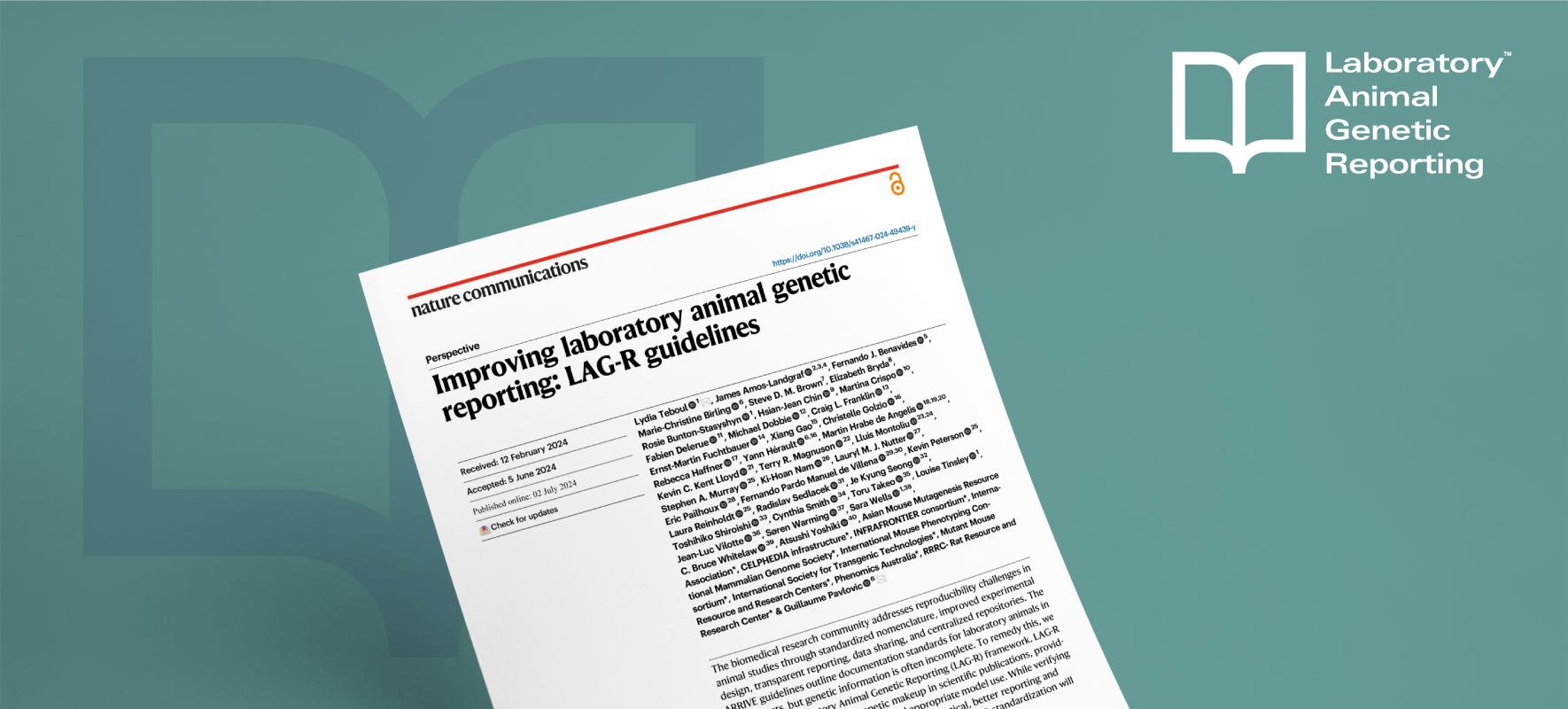Improving laboratory animal genetic reporting

The LAG-R framework (Laboratory Animal Genetic Reporting) has just been published in Nature Communications with Lydia Teboul, head of the Mary Lyon Centre at MRC Harwell’s Molecular Cell Biology team, as a corresponding author. The LAG-R framework is a set of guidelines to support more complete documentation of the genetic make-up of animals that are used in research, with the aim of bolstering reproducibility, reliability, and overall scientific rigour.
The biomedical research community is addressing many different factors that lead to problems with reproducibility, including via the implementation of the PREPARE guidelines, which aim to improve experimental design, and the ARRIVE guidelines, which aim to improve reporting of animal research experiments. However, a need remains for a more comprehensive description of the genetics of research animals, as differences in genetic background that are too often perceived as subtle can have a significant impact on phenotype and genetic modifications are rarely fully documented.
The LAG-R guidelines are designed to improve the documentation that is associated with animal research and to be applicable to the full range of animal species used. Standardising and improving genetic documentation will enhance research reliability and reduce wastage of resources and animals by cutting down on the reconstitution of missing information or on follow-up experiments that unknowingly use animals with different genetics.
The LAG-R guidelines have been developed by an international team that includes authors from 15 countries, working within a number of international consortia, including the Asian Mouse Mutagenesis Resource Association, the International Mammalian Genome Society, the International Mouse Phenotyping Consortium, the European Research Infrastructure for Modelling Human Diseases (INFRAFRONTIER), the International Society for Transgenic Technologies, the Mutant Mouse Resource & Research Centres, and Phenomics Australia.
The authors said: “The LAG-R Guidelines are not about influencing what models researchers use for their research. They are about standardising the way the genetics of these animals are documented. This framework is intended to be simple to adopt and takes in account the diversity of research environments where animals are used. Documentation is a key part of research reproducibility!“